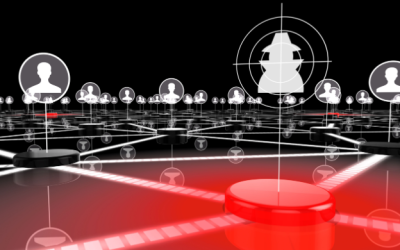As institutions of higher education continue to digitize their operations, the threat of cyber-attacks is becoming more and more prevalent. The number of cyber-attacks on higher education institutions has risen exponentially in the past decade, primarily because these institutions often lack the resources that are necessary to combat them adequately. Higher education institutions, like any large corporation or government agency, have a wealth of confidential personal information of its students and staff. This information includes social security numbers, personal medical information, and even financial records. A breach of this information can cause a large amount of issues for any organization, which is why it is so important to implement the right measures to better protect this data. Higher education institutions also face restraints, such as limited budgets and understaffing, making them a prime target for cyber-attacks.
Having effective cybersecurity measures in place is of paramount importance to protect sensitive information in higher education institutions. A successful breach of these institutions can have far-reaching consequences that can destroy reputations and cause extreme legal ramifications. It is not only the responsibility of higher education institutions to safeguard the data entrusted to them, but is also a matter of ethical obligation. Through the implementation of strong cybersecurity measures these institutions can significantly reduce the risk of data breaches and unauthorized access. With the ever-evolving threat landscape, it is crucial for higher education institutions to remain vigilant, adaptable, and proactive in their cybersecurity efforts. By doing so, they can maintain the trust and confidence of their students, staff, and stakeholders while safeguarding the integrity and security of their sensitive information.
One significant threat to these institutions is the rise of ransomware attacks, where malicious actors encrypt institutional data and demand a ransom for its release. These attacks can paralyze operations, disrupt critical services, and result in significant financial losses. Among all industries, higher education had the highest rate of ransomware attacks surveyed in a 2016 report published by BitSight. Phishing attacks are another prevalent threat, with cyber criminals crafting convincing emails or messages to trick users into sharing sensitive information or downloading malware. To effectively address all of these threats, higher education institutions must prioritize cybersecurity initiatives by investing in robust security measures, such as firewalls and encryption protocols. Additionally, training programs and awareness campaigns should be implemented to educate staff and students about best practices, emphasizing the importance of strong passwords and secure browsing. Through understanding the breadth and depth of threats, higher education institutions can work to ensure the safety of their digital assets. Gaining a comprehensive understanding of these threats is also essential due to the increasing expertise and skill set of malicious actors in their field. Consequently, this creates greater opportunity for today’s cyber criminals to access sensitive data which makes it even more important for organizations to increase their cybersecurity measures to better protect their data.
In today’s digital world, cyber criminals have become increasingly sophisticated in their tactics, thus becoming a formidable threat for both individuals and organizations. These malicious actors are continually evolving their methods, leveraging cutting-edge technologies and exploiting vulnerabilities in complex systems. From sophisticated phishing schemes and ransomware attacks to advanced social engineering techniques, cyber criminals have honed their skills to bypass traditional security measures and constantly adapt to evade detection. They exploit human psychology and target specific industries for valuable data and intellectual property that may not be as protected as information from other, more secure organizations. With the growing interconnectedness of systems and increasing reliance on technology, it is imperative for both individuals and organizations to stay vigilant and alert to the latest threats in order to protect sensitive information and maintain the integrity of the digital infrastructure. This means that organizations with large amounts of sensitive information must work to input new and preventative measures to protect their organizations from today’s highly adaptive and evolving cyber criminals. By prioritizing cybersecurity, organizations can mitigate risks and help protect sensitive data from the many threats that it faces in society today.
Cybersecurity is a critical aspect and major concern for every organization, especially higher education institutions. Universities like Penn State faced an average of 20 million attacks per day, which is said to be normal for a research institution. Therefore, having a comprehensive cybersecurity strategy in place is key. These institutions house vast amounts of sensitive data, ranging from the personal information of students and staff, to the valuable research and intellectual property of the university. Failure to protect this data can have many severe consequences including financial loss, identity theft, reputational damage, and even legal repercussions. A detailed cybersecurity strategy helps to mitigate these risks by implementing a multi-layered defense system, incorporating proactive measures such as threat detection, prevention, and incident response. This is of extreme importance as larger universities use a variety of different virtual platforms and tools that make their risk for cyberattacks much higher.
Students and staff often use a wide range of devices and applications within their institutions, creating a complex and challenging security environment. A comprehensive cybersecurity strategy enables institutions to identify and address vulnerabilities, educate users about best practices, and implement security controls across all educational systems. By safeguarding sensitive data and mitigating risks, these institutions can ensure a secure learning and research environment while preserving their reputation and protecting the interests of students, staff, and stakeholders. This represents a crucial aspect that large organizations must prioritize if they intend to thrive in today’s rapidly evolving contemporary landscape.
It is imperative to equip individuals with the knowledge and skills necessary to protect themselves and their organizations in an era where digital threats and vulnerabilities are ever-evolving. By providing proactive education in these institutions, both to students and staff, individuals are able to become more aware of the potential risks they face and gain a deeper understanding of the cybersecurity principles that can help protect them. These principles include strong password management, recognizing phishing attempts, and safeguarding personal data. Proactive education cultivates a culture of responsibility and accountability, empowering individuals to become active participants in securing their digital lives. Through ongoing learning initiatives, workshops, and awareness campaigns, proactive education serves as a powerful tool in fortifying defenses against cyber threats and mitigating potential damages in an interconnected world. It is essential to recognize the prominent and essential role that security education plays with regard to the cybersecurity landscape. Ultimately, it pays to stay vigilant when it comes to cybersecurity in higher education: proactive steps taken now can ensure full protection later.




